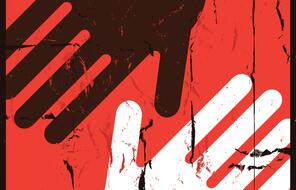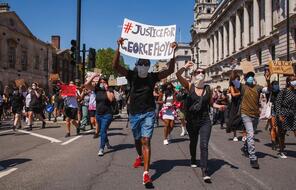Race is a concept that was invented by society to fulfill its need to justify disparities in power and status among different groups. Contrary to the beliefs of many people, past and present, race has never been scientifically proven to be a significant genetic or biological difference in humans. The lack of scientific evidence about race undermines the very concept of the superiority of some ‘races’ and the inferiority of other ‘races’.
For at least 400 years, a theory of ‘race’ has been a lens through which many individuals, leaders and nations have determined who belongs and who does not. Theories about race include the notion that human beings can be classified into different races according to certain physical characteristics, such as skin colour, eye shape and hair form. This racial theory has led to the common – but false – belief that some races have intellectual and physical abilities that are superior to those of other races. Biologists and geneticists today have not only disproved this claim, they have also declared that there is no genetic or biological basis for categorising people by race.
The concept of race emerged in the 1600s and 17oos, but when the scientific and intellectual ideals of the Enlightenment came to dominate the thinking of most Europeans, they exposed a basic contradiction between principle and practice – the enslavement of human beings. Despite the fact that Enlightenment ideals of human freedom and equality inspired revolutions in the United States and France, the practice of slavery persisted throughout both the US and Europe. In the late 1700s and early 1800s, American and European scientists tried to explain this contradiction through the study of ‘race science’, which advanced the idea that humankind is divided into separate and unequal races. The theory was that if it could be scientifically proven that Europeans were biologically superior to those from other places – especially Africa – then Europeans could justify slavery and other imperialistic practices.
Prominent scientists from many countries, including Sweden, the Netherlands, Germany, Britain and America, used ‘race science’ to give legitimacy to the race-based divisions in their societies. This pseudo-science was popularised and became a tool that justified the mistreatment and exploitation of fellow human beings, eventually leading to the now rightly maligned practice of eugenics.
Despite the fact that race predicts nothing about an individual’s physical or intellectual capacities, people still commonly believe in a connection between race and certain biological abilities or deficiencies. The belief in this connection not only leads to racism, it can also be used as a scientific ‘excuse’ for racism and a reason for justifying social hierarchies that place one race above another. As scholar George Fredrickson explains, racism has two components: difference and power.
[Racism] originates from a mindset that regards ‘them’ as different from ‘us’ in ways that are permanent and unbridgeable. This sense of difference provides a motive or rationale for using our power advantage to treat the … Other in ways that we would regard as cruel or unjust if applied to members of our own group.
The idea that there is an underlying biological link between race and intellectual or physical abilities (or deficiencies) has persisted for hundreds of years. Learning that race is a social concept, not a scientific fact, may be challenging for students. They may need time to absorb the reality behind the history of race because it conflicts with the way many in our society understand it.






















